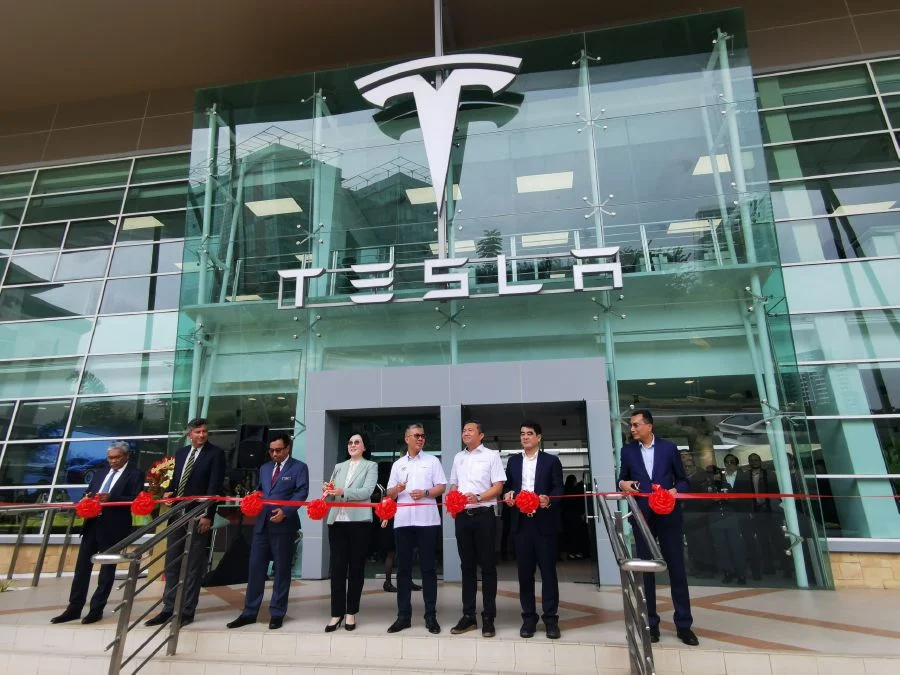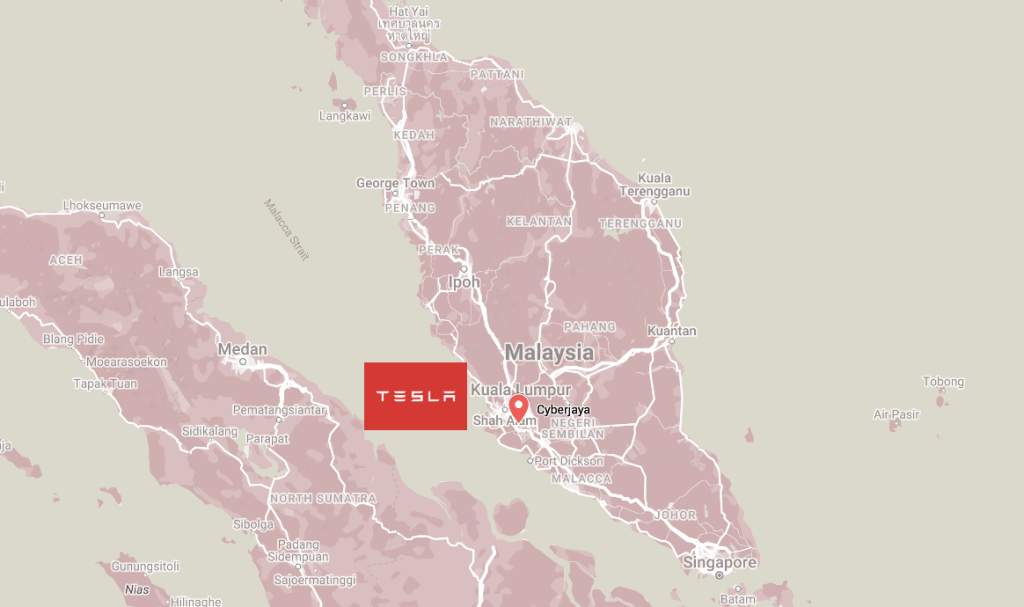Electrifying Change: How Tesla’s Malaysian Headquarters Signals a Shift in ASEAN Automotive Dynamics
Tesla’s expansion into Malaysia by setting up regional headquarter in Cyberjaya represents a significant development in the Southeast Asian automotive sector, particularly in the electric vehicle (EV) market. The newly established office will facilitate the importation and distribution of vehicles constructed at Tesla’s Shanghai plant into Malaysia. Concurrently, Tesla has also established a subsidiary in Thailand, initiating the promotion of its electric vehicles to the local market there. The prestige associated with the Tesla brand has sparked significant enthusiasm around these ventures. However, this move has led to curiosity and questioning among some in Indonesia, especially considering the nation’s proactive efforts to attract Elon Musk and Tesla in recent years.

Tesla Malaysia’s 55,000 sq ft two-storey headquarters in Cyberjaya, Selangor, Malaysia. Photo credit: nst.com.my

Malaysia’s Role in Tesla’s Supply Chain
Malaysia is positioned to become a higher tier in Tesla’s supply chain, especially due to its strong electrical and electronics (E&E) industry. Malaysia is recognized as the 7th largest producer in the E&E sector, which includes semiconductors, a key component for EVs. This strong industrial base is a primary reason Tesla chose Malaysia for investment over other countries, as the local ecosystem supports manufacturing needs for Tesla’s products. For now, this initial entry into the Malaysian market is mostly aimed at the very end of the supply chain, when the car is sold to the consumer. That will be the primary purpose of Tesla’s new Malaysian office, as well as providing after-sales support and services.
Why Malaysia Over Indonesia
While Indonesia was also a strong contender, due to its significant nickel reserves crucial for battery production, Tesla opted for Malaysia primarily due to its established E&E supply chain. This strong industrial base provides Tesla with a reliable supply chain for the sophisticated electronics needed in its vehicles. Moreover, Malaysia presents a more attractive retail market for Tesla due to its higher GDP per capita compared to neighboring countries. This implies that a larger share of the Malaysian population has the financial means to afford a Tesla, making it an excellent market for selling imported EVs. Additionally, the Malaysian government’s stability has been highlighted as a crucial factor for attracting foreign investments from tech giants like Tesla and Amazon. The stabilization under the new leadership made the business environment more predictable and reliable, which is essential for long-term investments. Crucially, Tesla is allowed to bypass traditional dealership systems, reducing costs and streamlining the sales process. Tesla’s Direct-to-Consumer (D2C) model means bypassing the requirement of franchised Approved Permits (AP).
Another reason could be Tesla’s transition to lithium iron phosphate (LFP) batteries, moving away from traditional nickel-based chemistries. This aligns with their strategy of cost reduction and addresses concerns over nickel’s long-term availability, making Tesla less dependent on Indonesia’s nickel resources, diminishing the country’s strategic advantage. The lower cost and safety of LFP batteries allow Tesla to tap into Malaysia’s relatively wealthier consumer base, offering more affordable EVs suitable for the country’s market. The sufficient energy density of LFP batteries for standard range vehicles complements Malaysia’s urban settings, where long-range capabilities may not be as critical. Therefore, Tesla’s strategic shift in battery technology, combined with economic and industrial considerations, likely influenced its decision to establish a regional headquarters in Malaysia, focusing on the broader Southeast Asian market.
Implications of Tesla’s Move, Future Prospects and Developments:
Tesla’s establishment in Malaysia is to significantly impact the nation’s automotive landscape, particularly boosting the electric vehicle (EV) segment and number of loading hubs. This move is expected to spur local and international investments in EV infrastructure and motivate other automotive companies to advance their own EV projects. Malaysia’s selection by Tesla could position the country as a crucial hub for EV sales and distribution in Southeast Asia. Although initially, the investment is said to be more oriented towards distribution and charging networks rather than manufacturing, it could lead to broader regional roles, including exports.
Additionally, the development could foster a more robust automotive supply chain, drawing Tesla’s suppliers and partners to Malaysia, thus strengthening the nation’s manufacturing capabilities and regional industry status. If Tesla relocates R&D centre jobs to India, Tesla’s advanced technologies are anticipated to catalyze skill development and technology transfer, enhancing the expertise of local engineers and technicians in EV technology. Environmentally, Tesla’s emphasis on EVs aligns with global sustainability efforts, potentially reducing Malaysia’s carbon footprint and promoting green technological advancements. Market dynamics are likely to evolve, increasing competition and innovation within the automotive sector, possibly resulting in better products and more competitive pricing for consumers. Economically, Tesla’s presence is expected to create jobs, stimulate economic growth, and attract further foreign direct investment. On a broader scale, Tesla’s investment could elevate Malaysia’s international standing as a center for high-tech investment and innovation, encouraging additional global advancements and investments in the region.


